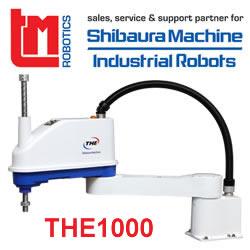Chip-Sized Digital Optical Synthesizer to Aim for Routine Terabit-per-second Communications
Precise control of optical frequency on a chip could offer revolutionary technology advances similar to those from the move from AM radio to FM radio in the 1940s
In the 1940s, researchers learned how to precisely control the frequency of microwaves, which enabled radio transmission to transition from relatively low-fidelity amplitude modulation (AM) to high-fidelity frequency modulation (FM). This accomplishment, called microwave frequency synthesis, brought about many advanced technologies now critical to the military, such as wireless communications, radar, electronic warfare, atomic sensors and precise timing. Today, optical communications employ techniques analogous to those of pre-1940 AM radio, due to the inability to control frequency precisely at optical frequencies, which are typically 1,000 times higher than microwaves. The higher frequency of light, however, offers potential for 1,000-fold increase in available bandwidth for communications and other applications.
As both government and commercial need for bandwidth continues to grow, DARPA's new Direct On-chip Digital Optical Synthesizer program seeks to do with light waves what researchers in the 1940s achieved with radio microwaves. Currently, optical frequency synthesis is only possible in laboratories with expensive racks of equipment. If successful, the program would miniaturize optical synthesizers to fit onto microchips, opening up terahertz frequencies for wide application across military electronics systems and beyond.
"The goal of this program is to make optical frequency synthesis as ubiquitous as microwave synthesis is today," said Robert Lutwak, DARPA program manager. "There are significant challenges, but thanks to related DARPA programs POEM, Quasar, ORCHID, PULSE and E-PHI and other advanced laboratory research, technology is at the tipping point where we're ready to attempt miniaturization of optical frequency synthesis on an inexpensive, small, low-power chip."
The basic concept is to create a "gearbox" on a chip that produces laser light with a frequency that is a precise multiple of a referenced radio frequency, such as is readily available within most existing DoD and consumer electronic systems. The ability to control optical frequency in a widely available microchip could enable a host of advanced applications at much lower cost, including:
*High-bandwidth (terabit per second) optical communications
*Enhanced chemical spectroscopy, toxin detection and facility identification
*Improved light detection and ranging (LiDAR)
*High-performance atomic clocks and inertial sensors for position, navigation and timing (PNT) applications
*High-performance optical spectrum analysis (OSA)
For example, digital optical synthesizers on a chip could increase accuracy for optical chemical sensing by six orders of magnitude while reducing cost, size and power requirements by many orders of magnitude over current capabilities. These improvements would make it possible to detect adversary chemical production facilities with high sensitivity from much farther away than is possible today.
The program envisions three phases, lasting a total of 42 months. Phase 1 would involve a demonstration of optical frequency synthesis in a laboratory, using low size, weight and power (SWaP) optical components. Phase 2 calls for a demonstration of an integrated electro-optical component. Phase 3 calls for successful demonstration of integrated optical frequency synthesizer and control electronics meeting all program performance and SWaP metrics.
"We're looking for multidisciplinary teams made up of experts in micro- and nano-fabrication, optics and photonics, and heterogeneous integration to bring the component technologies together," Lutwak said.
To familiarize potential participants with the program's technical objectives, DARPA has scheduled a Proposers' Day for Monday, April 28, 2014, in Arlington, Va. For details, visit http://go.usa.gov/kkPW. The Broad Agency Announcement (BAA) for the program is available at http://go.usa.gov/kR9J.
Featured Product

